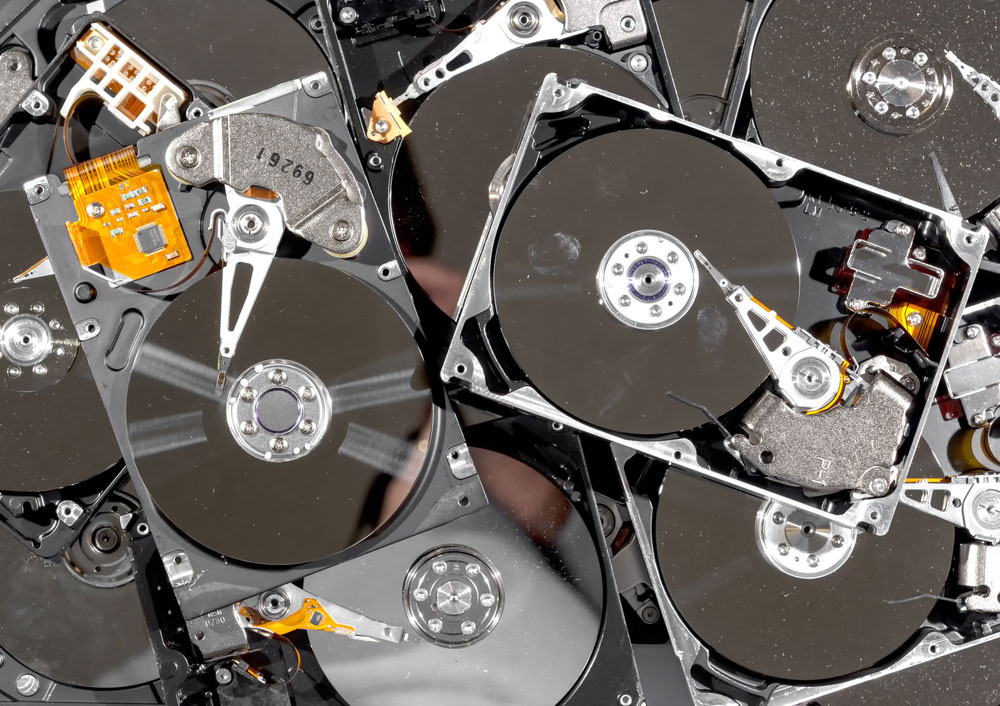Don't Sell Your Old Hard Drive Until You Do This
Most used hard drives still hold the previous owner's data

Reselling an old hard drive? Don't do it until you've made sure you've wiped the drive correctly.
A new study commissioned by the British consumer-tech website Comparitech and performed by researchers at the University of Hertfordshire found that 59% of used hard drives purchased in the United Kingdom and United States contained data about the previous owners.
The data included "employment and payroll records, family and holiday photos, business documents, visa applications, resumes and job applications, lists of passwords, passport and driver's license scans, tax documents, bank statements, and lists of students," Comparitech said, plus a fair amount of "sexualized content."
Only 26% percent of the drives had been properly wiped, Comparitech said. Another 16% couldn't be accessed at all, indicating a dead drive or other hardware issue.
MORE: How to Erase Your Data From an Old Computer or Phone
The sad part was that 43% of the previous owners had tried to wipe the drives. They just hadn't done it the right way.
Seventeen percent of the drives had had the data "deleted" by their previous owners. But as computer experts can tell you, deleting a file only tells the computer's operating system that the data can be overwritten. The file is still there and can easily be read by drive-recovery tools.
Sign up to get the BEST of Tom's Guide direct to your inbox.
Get instant access to breaking news, the hottest reviews, great deals and helpful tips.
Twenty-six percent of the drives had been subject to a quick-format process, but that doesn't zap much more the deletion process. Data-recovery tools will still be able to get most of the files back.
Another 16% of the previous owners held no illusions about data safety and had made no attempt whatsoever to wipe the drives, Comparitech reported.
The researchers bought 200 used hard drives online, in secondhand shops and in "conventional auctions," Comparitech said, splitting the numbers evenly between the U.S. and the U.K.
A plurality of Brits (37%) tried quick-formatting the drives, and the greatest number of Yanks (24%) tried just deleting files, but only slightly Britons (29%) than Americans (23%) succeeded in properly wiping the drives. (Comparitech and the U. of Hertfordshire carried out a very similar study of USB flash drives earlier this year.)
How to properly wipe your hard drive
To make sure a computer hard drive is wiped properly, it depends whether the drive is an old-fashioned spinning-disk drive (HDD) or a solid-state drive (SSD). All of the drives tested by the Hertfordshire researchers for Comparitech were HDDs.
To wipe HDDs in Windows, use Disk Manager (right-click the Windows icon at bottom left and scroll up to Disk Manager) and select the drive to be formatted. Make sure that "Perform a quick format" is unchecked and select NTFS as the file system. Format the drive three times to make sure you get everything.
Alternatively, you can download and use the free DBAN utility to wipe HDDs in Windows. Or you could completely destroy the drive by drilling through it or tossing into a lake. You'd get only a few bucks for most used drives anyway.
For HDDS in Mac, use Disk Utility, found in the Utilities folder, which you can open by hitting the Apple, Shift and U keys at the same time. Select the drive to be formatted and click Erase. You'll want to do that two or three times, and you will have to give the newly formatted drive a name.
SSDs are more complicated. They write, allocate and erase data completely differently from HDDs, so standard wiping methods, including DBAN, may not work. Instead, it's better to use disk-management software made by the SSD's manufacturer, such as Corsair, Crucial, Intel, OCZ/Toshiba, Samsung or SanDisk.
If you don't know who made your SSD, or you can't find or use the manufacturer's utility, then you will have to download and install a disk-wiping utility onto a USB drive or an optical disk and reboot from that. You can use the $11 Parted Magic software, or the free Gparted utility.
Paul Wagenseil is a senior editor at Tom's Guide focused on security and privacy. He has also been a dishwasher, fry cook, long-haul driver, code monkey and video editor. He's been rooting around in the information-security space for more than 15 years at FoxNews.com, SecurityNewsDaily, TechNewsDaily and Tom's Guide, has presented talks at the ShmooCon, DerbyCon and BSides Las Vegas hacker conferences, shown up in random TV news spots and even moderated a panel discussion at the CEDIA home-technology conference. You can follow his rants on Twitter at @snd_wagenseil.

